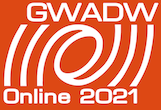Speaker
Description
GW170817 opened a new era of the observation of the Universe through the multi-messenger astronomy. The full exploitation of this new era will pass through the realisation of innovative tools, possibly compliant with the FAIR principles, allowing the efficient exchange of essential information between the different partners in a multi-messenger observation. Present and future gravitational wave (GW) observatories have to provide an immediate and accurate localisation of astronomical transients: each localisation of the GW source, provided through a Multi-Order Coverage (MOC) map, can be tested in parametrised intersection with the sky area visible from an observatory of interest. This kind of information needs to be easily accessible and must be provided in a clear and standardized format. Technical challenges are linked to the fact that in the upcoming era of ET-class observatories, we will face the increasing rate of announced transients as well as growing and heterogeneous user community.
Hereby we present a solution based on a dedicated web service integrated in the environment of Virtual Observatory and we sketch its implementation.

